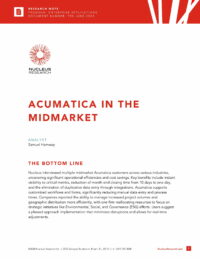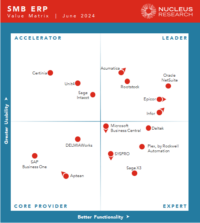Support & Resources
Your success is our success
We have the industry’s highest customer satisfaction rating because we put our customers—and their customers—first.
Personalized support
through your local partner
Our international network of experienced resellers will help in the evaluation, implementation, training, and ongoing support of Acumatica ERP. We’ll match you with a local partner who knows your market and your industry.
When you choose Acumatica, you can count on receiving personalized service and expert support from someone who actually understands your business needs.
We use a multi-layered approach to support our customers:
- Our industry-leading VAR network
- 24/7 access to direct support from Acumatica
- A thriving online community and comprehensive training resources
Acumatica direct support
Our customers and our partners (VARs) have 24/7 access to direct support from Acumatica experts. Call, chat, or email—we’re always here to ensure you get the most out of your ERP investment.
Community resources
Our community is one of our greatest strengths. Experience the industry’s most comprehensive online training in Open University; use the built-in User Guide for self-paced learning; tap the wisdom of our user groups; or get hands-on, instructor-led classes for a nominal fee.
Featured resources
Analyst Report
Analyst Report
Attend an Acumatica event
Join us to gain insider industry knowledge and maximize your software investments.
 Canada (English)
Canada (English)
 Colombia
Colombia
 Caribbean and Puerto Rico
Caribbean and Puerto Rico
 Ecuador
Ecuador
 India
India
 Indonesia
Indonesia
 Ireland
Ireland
 Malaysia
Malaysia
 Mexico
Mexico
 Panama
Panama
 Peru
Peru
 Philippines
Philippines
 Singapore
Singapore
 South Africa
South Africa
 Sri Lanka
Sri Lanka
 Thailand
Thailand
 United Kingdom
United Kingdom
 United States
United States








